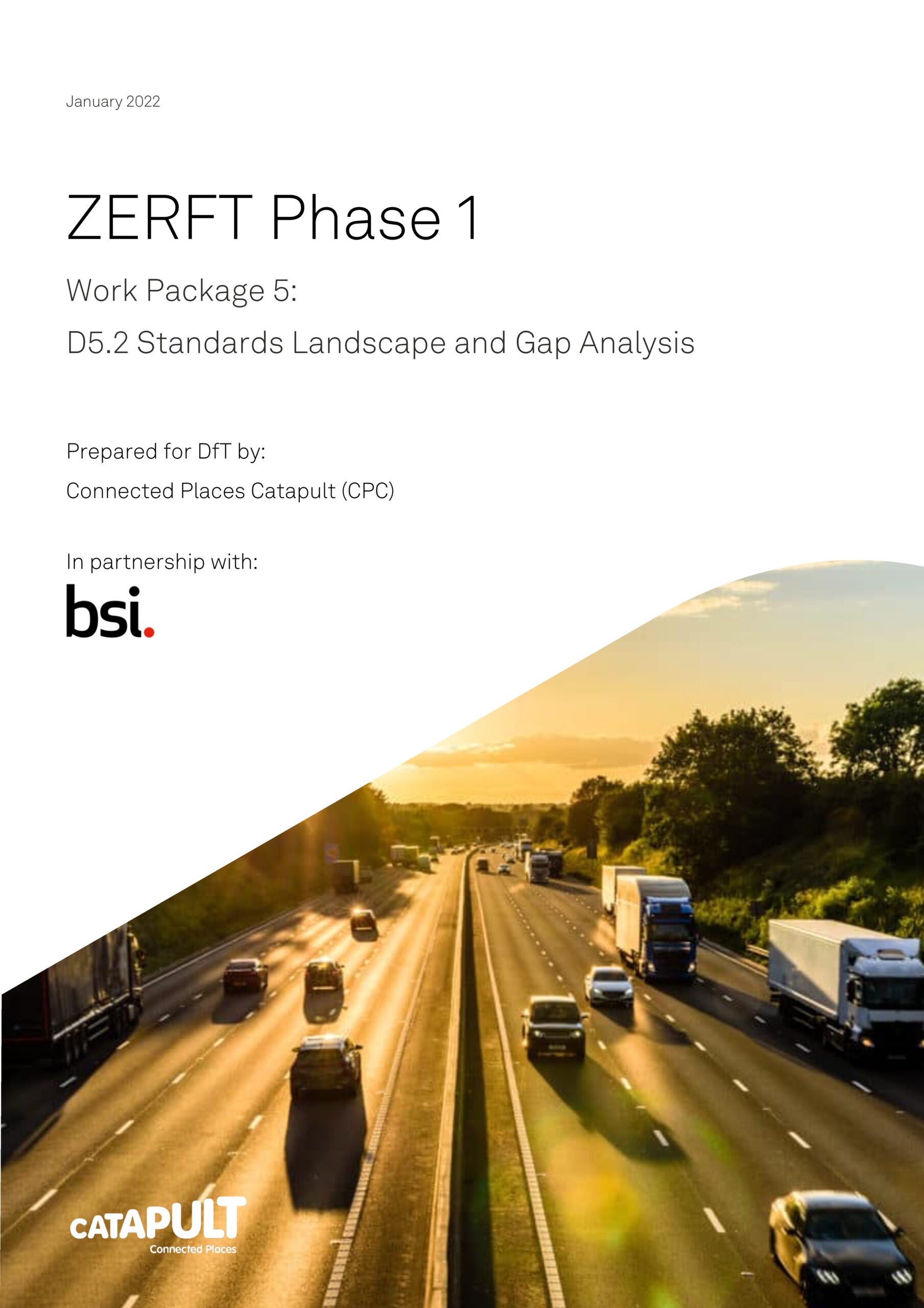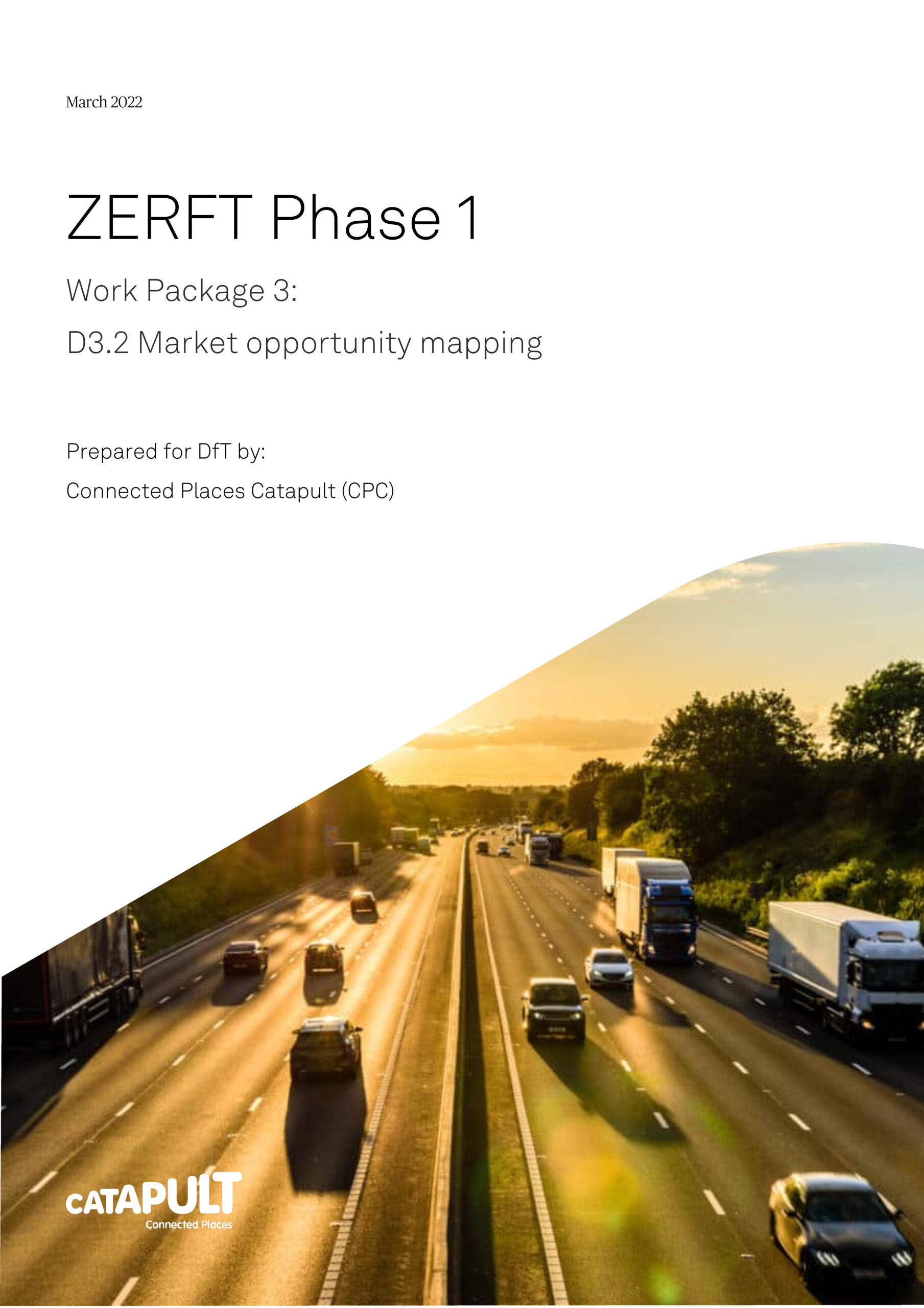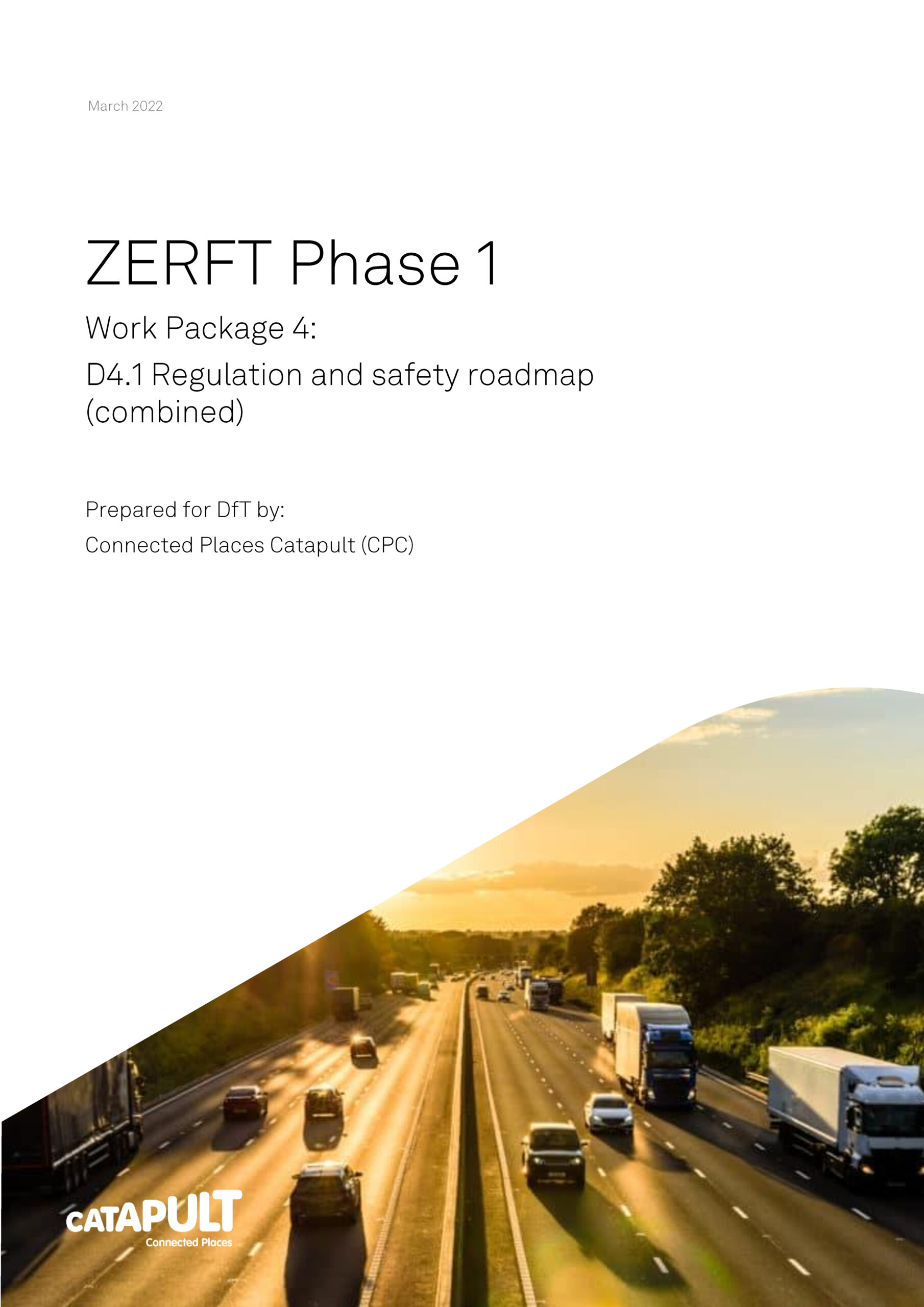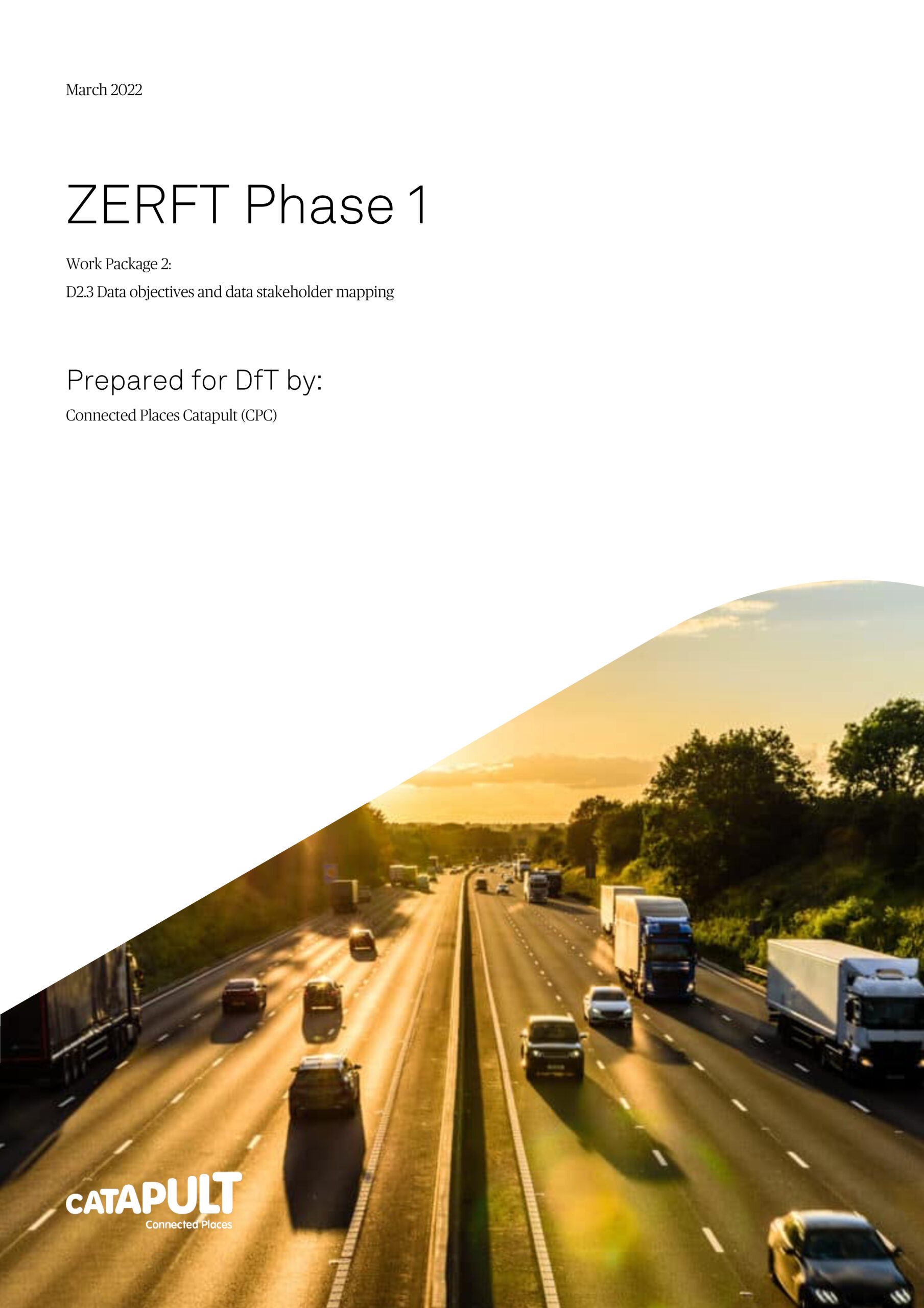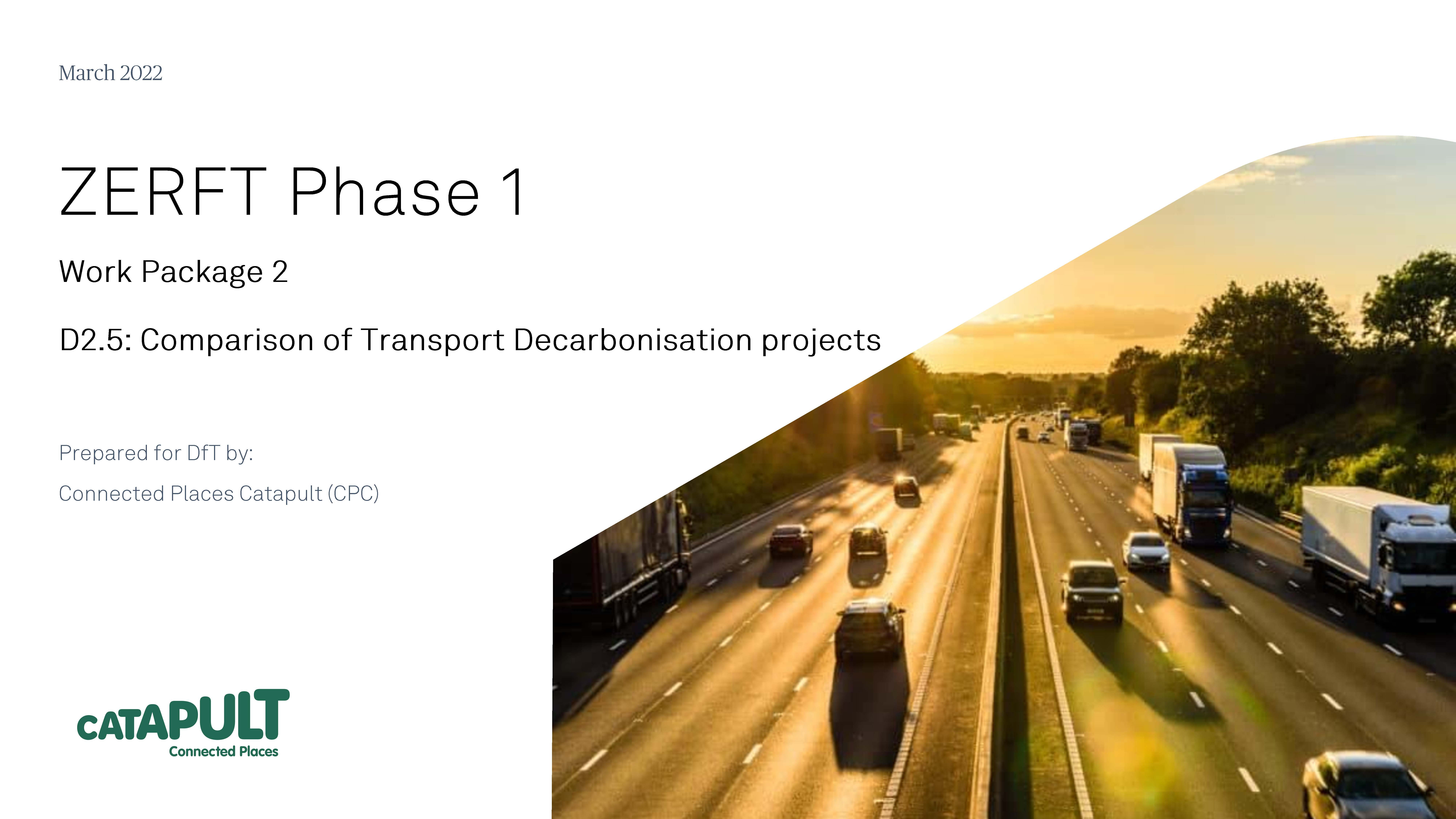Heavy Goods Vehicles (HGVs) are vital to industry and represent the backbone of trade and commerce worldwide. They are responsible for ensuring we have access to food, medicines, and goods of all kinds.
Almost 90% of domestic goods transported in the UK in 2022 were moved by road – the vast majority of which by heavy goods vehicles (HGVs). These vehicles currently produce approximately 19% of all UK domestic transport greenhouse gas emissions. By 2050, this must be reduced to zero, in line with the UK Government’s Net Zero Strategy.
Connected Places Catapult is supporting Innovate UK and the Department for Transport with the Zero-Emission HGVs & Infrastructure Demonstration programme, which represents a public investment of up to £200 million, match-funded by industry. The programme will see the launch of the first large (40+ tonne) zero-emission HGVs in significant numbers, together with supporting infrastructure, which will enable freight operators to determine the suitability of the new technology for their operations. Public-facing battery-electric charging stations and hydrogen refuelling stations will enable HGVs to go beyond ‘back to base’ operations.
Further information regarding the programme can be found here and a full list of the winning consortia partners has been published here.
Together with BSI, Connected Places Catapult is supporting partners involved in the Innovate UK-funded demonstrations and stakeholders in the wider zero-emission HGV ecosystem.
There are four strands to our DfT-funded project.
- Standards – in partnership with BSI
- Commercial and Investment Strategy
- Safety and Security Best Practice
- Infrastructure Planning Best Practice
- Joined Up Thinking
Standards – in partnership with BSI
Standards are crucial in ensuring zero-emission HGVs can roll out in an efficient and safe manner, with interoperability embedded from the start, and to create a market that delivers on required outcomes. Through the standards work, in partnership with BSI, we have formed a Standards Advisory Group for zero-emission road freight that will provide the decision making and governance for the standards development work. Three ‘flex’ standards, which are well suited to fast-moving areas of innovation, are currently being developed.
We’re pleased to announce that BSI Flex 2071 v1.0:2024-06, titled ‘Design of publicly accessible charging sites for battery electric HGVs – Code of practice’, has been released and is out for public consultation for one month until July 12th 2024.
Click here to view, download and share your feedback on the first version of this Flex.
Further background on our standards work can be viewed here.
Commercial and Investment Strategy
The public / private investment through the programme is crucial in helping to bring stakeholders together and roll out the initial vehicles and infrastructure, but it is just a starting point. Much more finance will be needed to fully transition the 600,000 HGVs across the UK and the millions around the world. These investments will ultimately be offset by reduced total cost of ownership with lower fuel costs, increased driver satisfaction and improved sustainability as we move towards circular supply chains. We are speaking to the UK-based and international investor ecosystem to create a long-term and sustainable programme of decarbonisation. We intend to create a trade and investment bridge for the programme, raise the profile of UK-led activities to local and international markets and position the UK as a thought leader and green partner of choice.
Safety and Security Best Practice
Safety is top of the agenda when developing zero-emission demonstrations of HGVs. We are seeking industry consensus on best practice in terms of safety and security to inform both demonstrations and longer term roll out of vehicles and infrastructure. Standards and guidance documents must work together with regulations to ensure safe practices are embedded as existing industries transition and new industries are formed.
Our best practice document, to be published in December 2023, will consider the operation, refuelling/charging, maintenance, and recovery of the vehicles. The focus is on new hazards that are novel to heavy duty battery electric and hydrogen fuel cell vehicles.
Infrastructure Planning Best Practice
Planning and regulatory hurdles are a key barrier to wide-scale infrastructure deployment for zero emission HGVs. In December 2023, we will publish a reference document for stakeholders involved in planning, design and roll out of battery-electric charging and hydrogen refuelling infrastructure.
We will consider the overall system of HGV charging / refuelling, and the decisions needed from the earliest concept stage through to operations. Our scope includes barriers, existing and emerging guidance, charging/refuelling location, the planning and regulatory landscape, funding and case studies.
Joined Up Thinking
Our subject areas overlap considerably. For example, one of the biggest safety concerns is allocating sufficient space for public HGV refuelling/recharging facilities, which has an impact on the financing of the site and on the infrastructure planning. We will consider these interdependencies in our reporting, and would welcome further discussion with other sectors.


